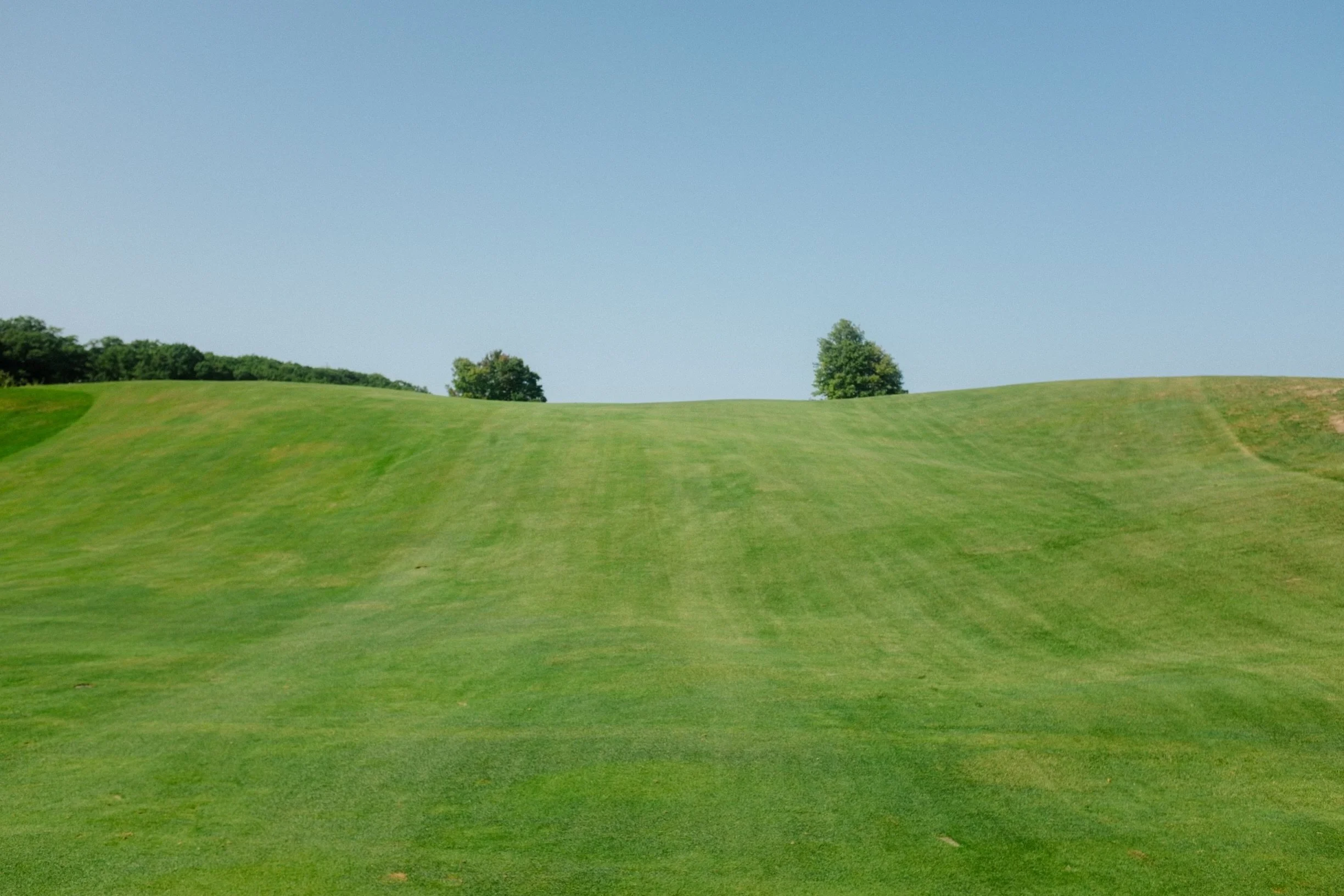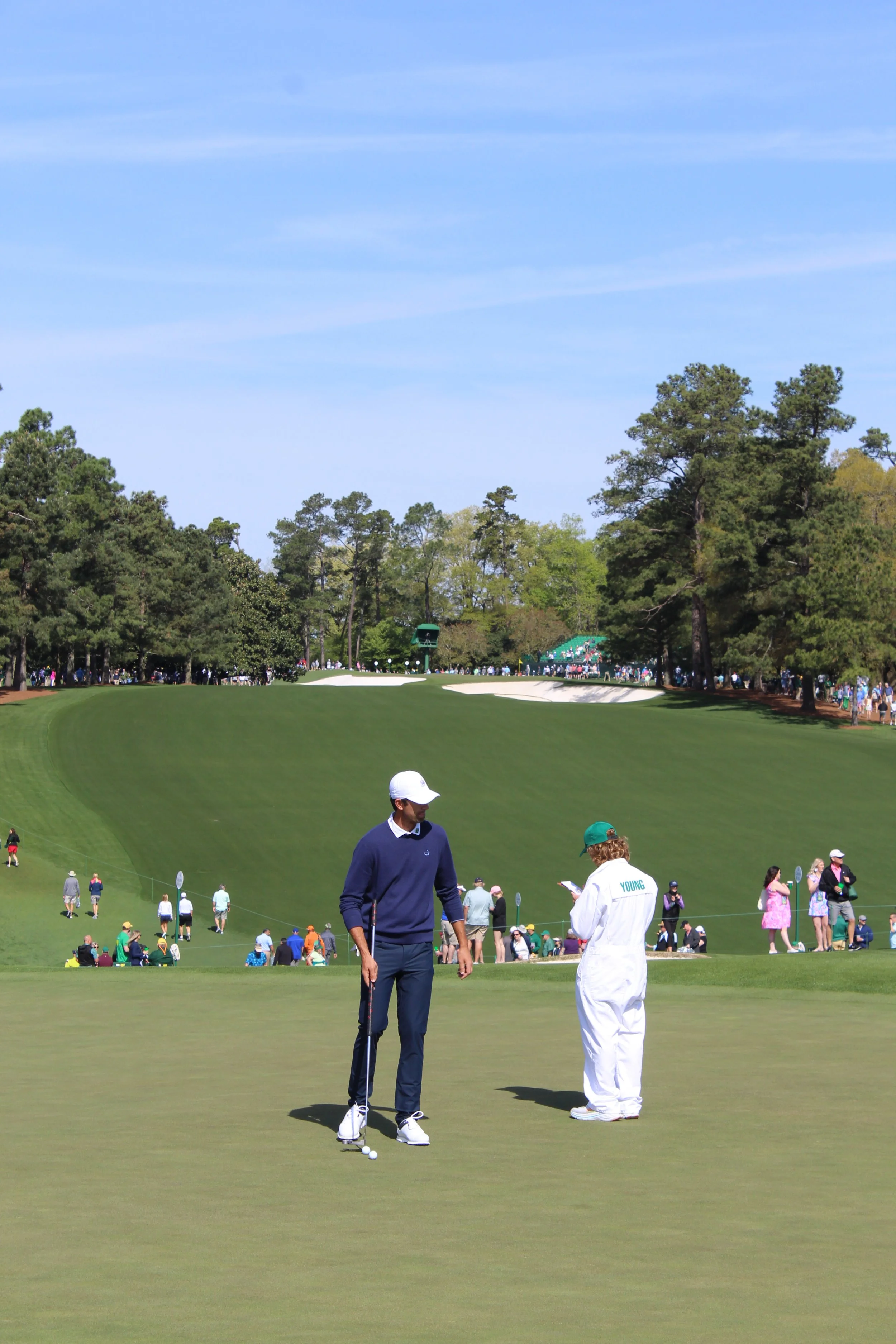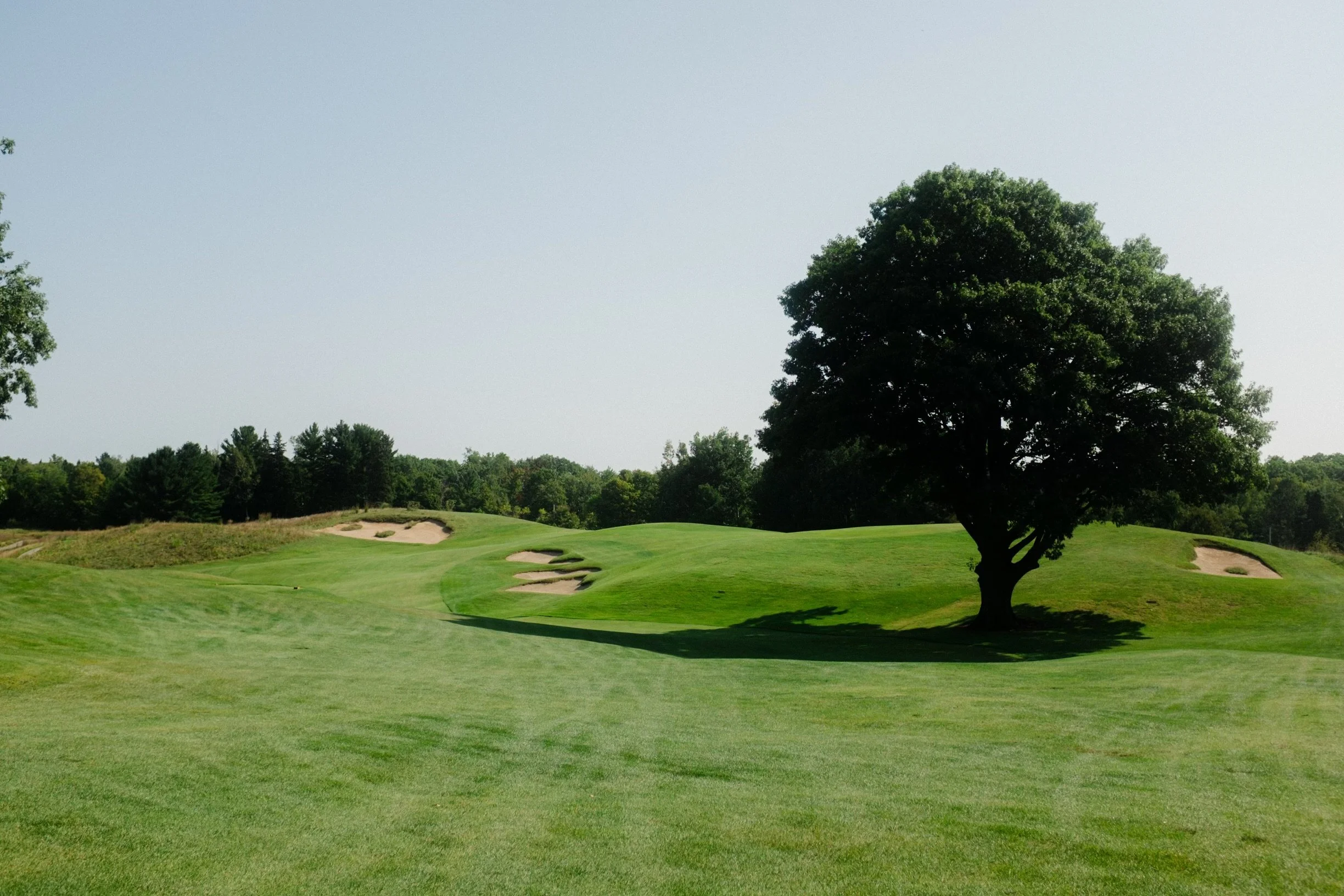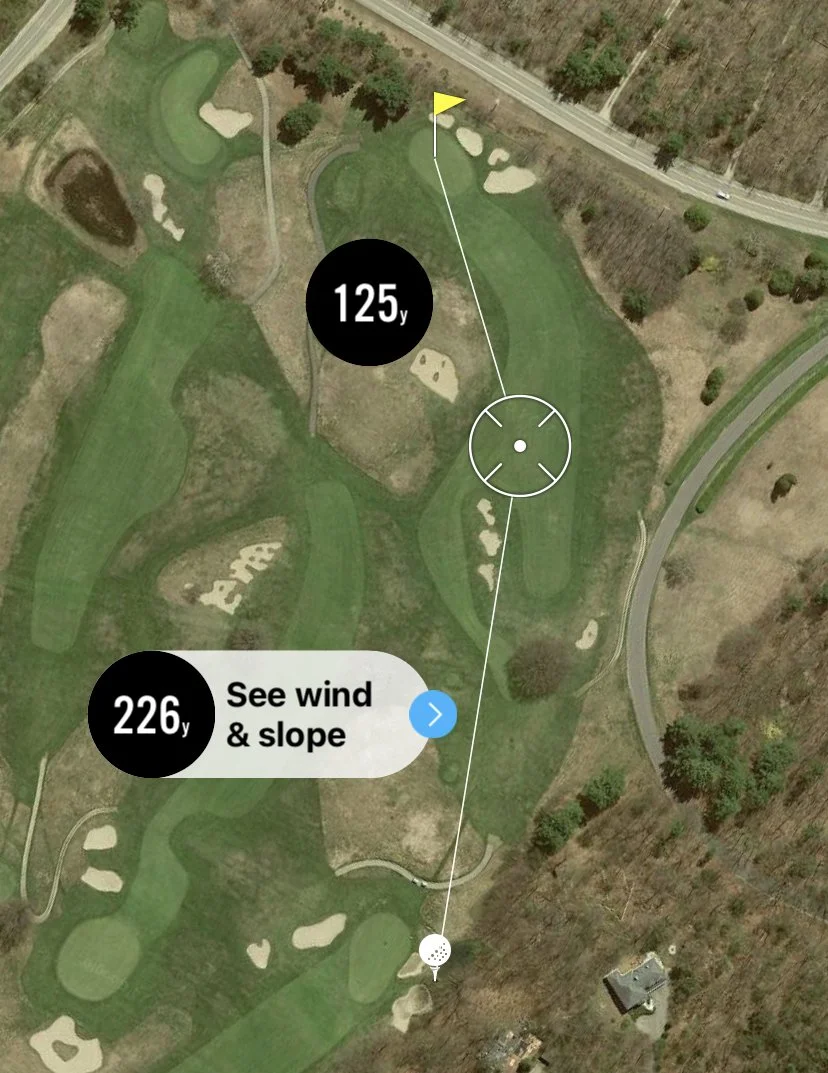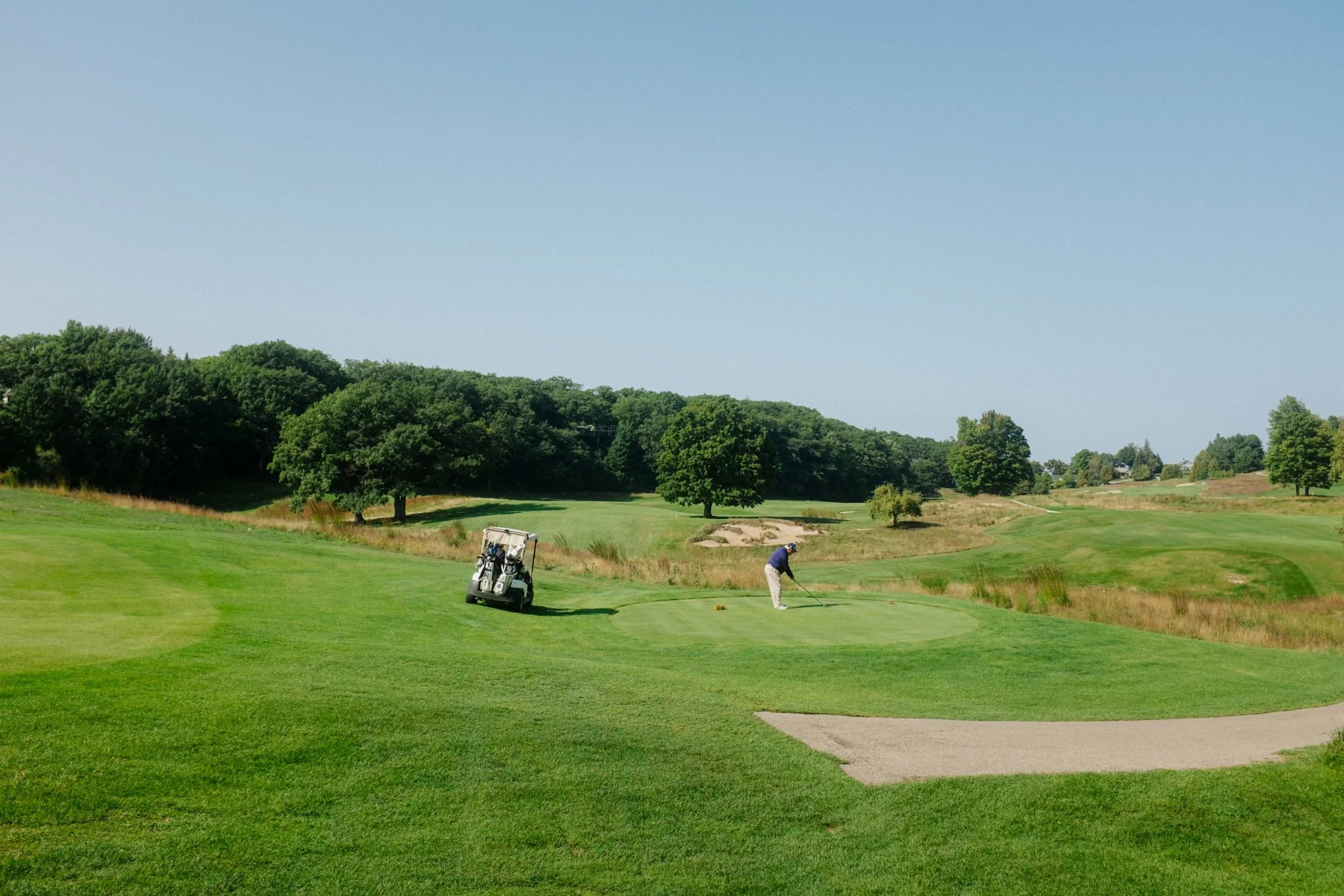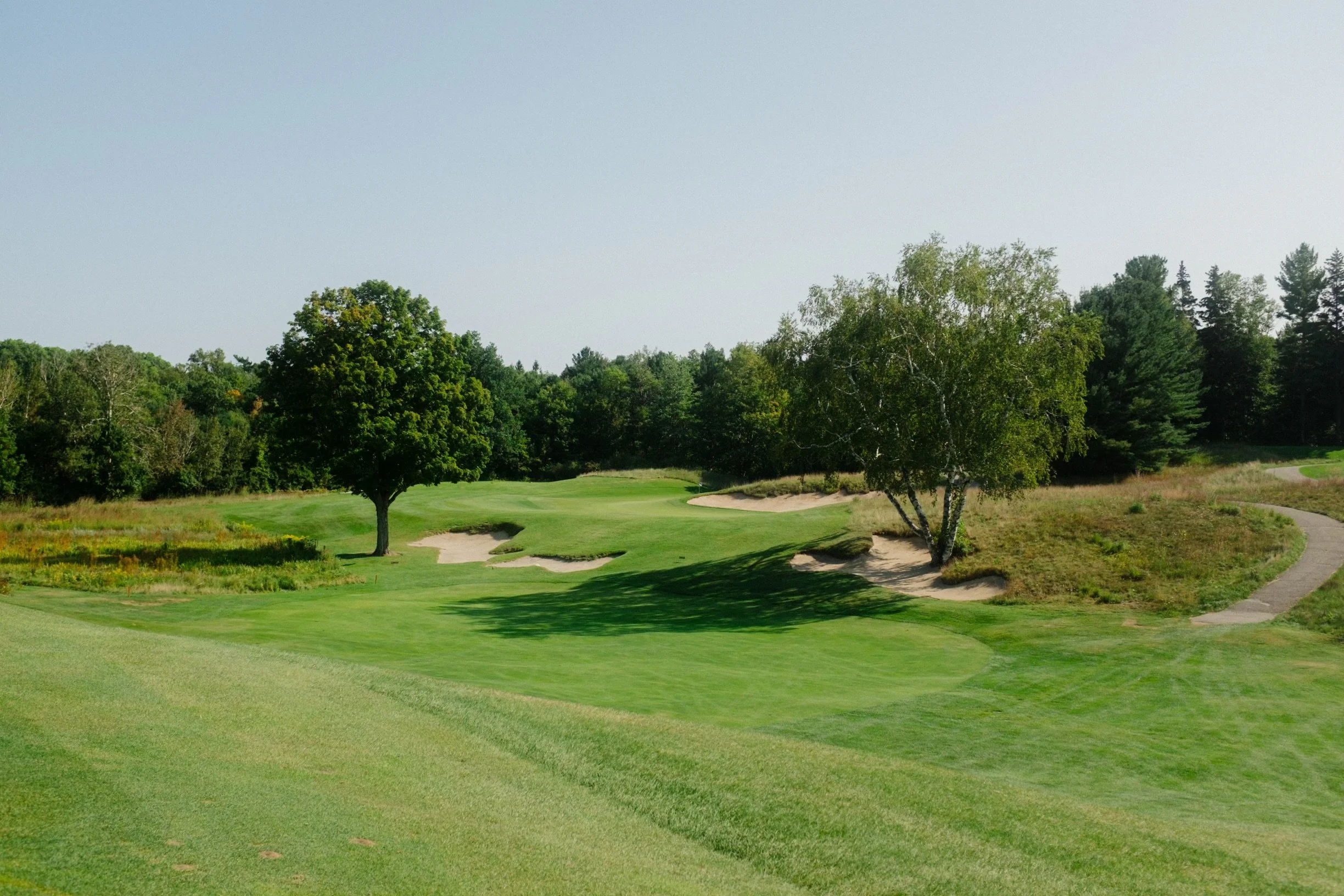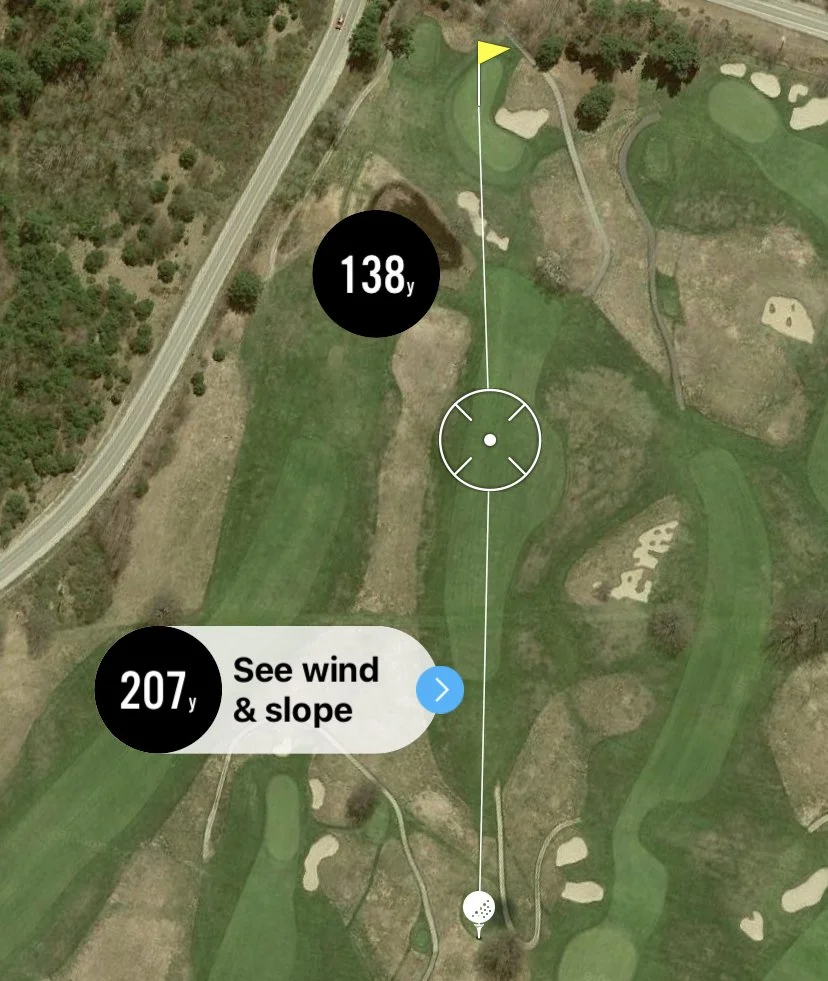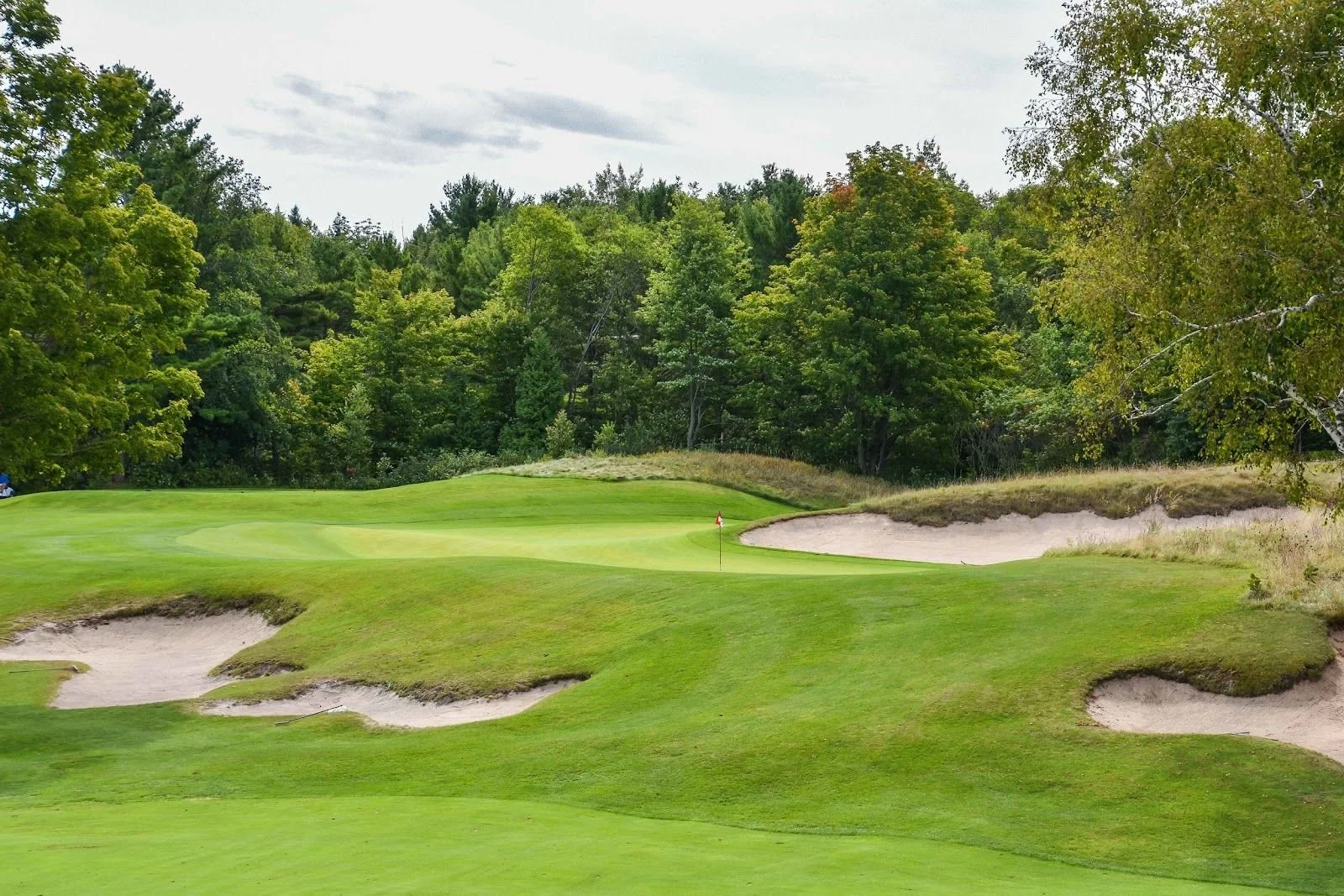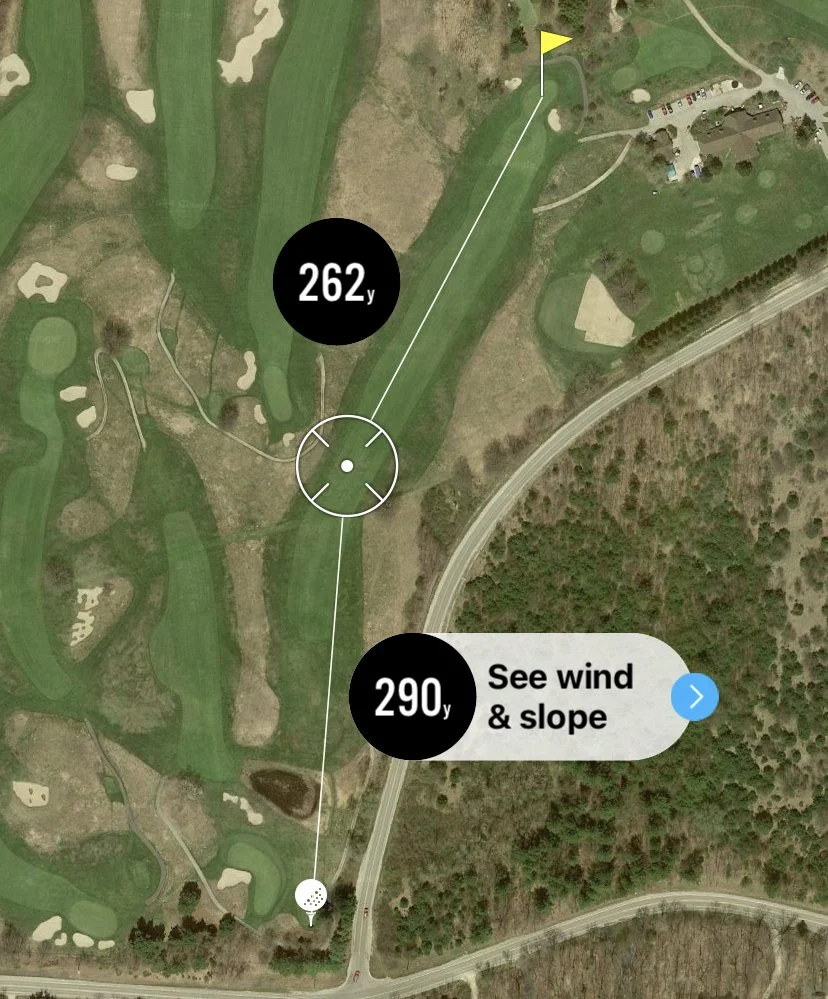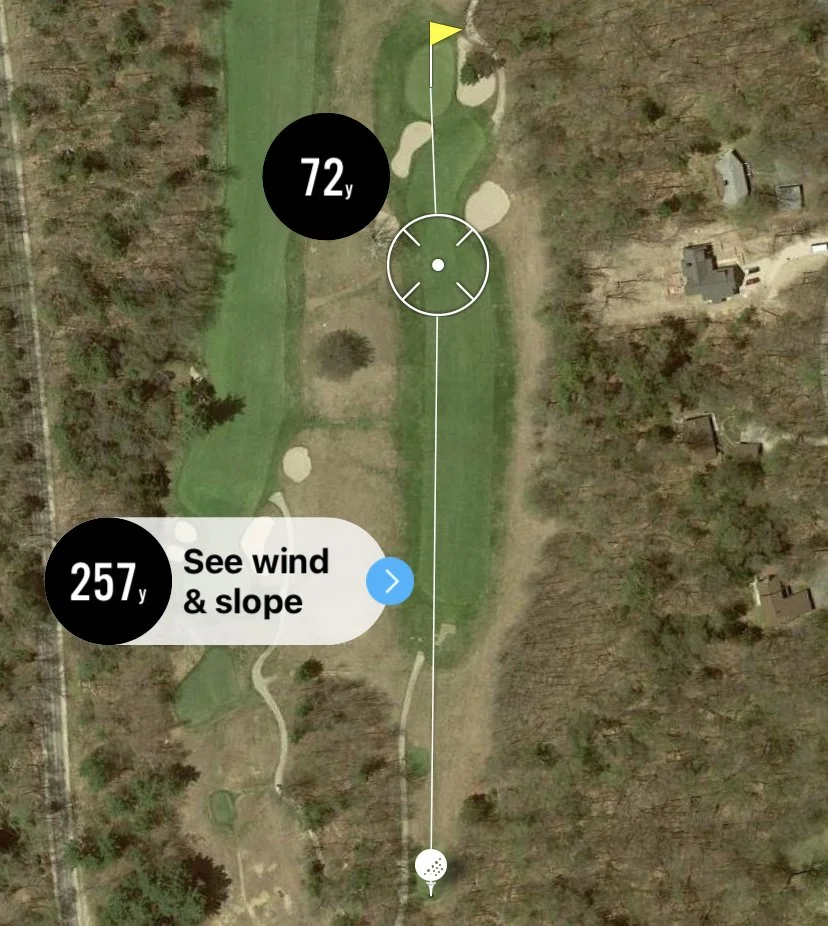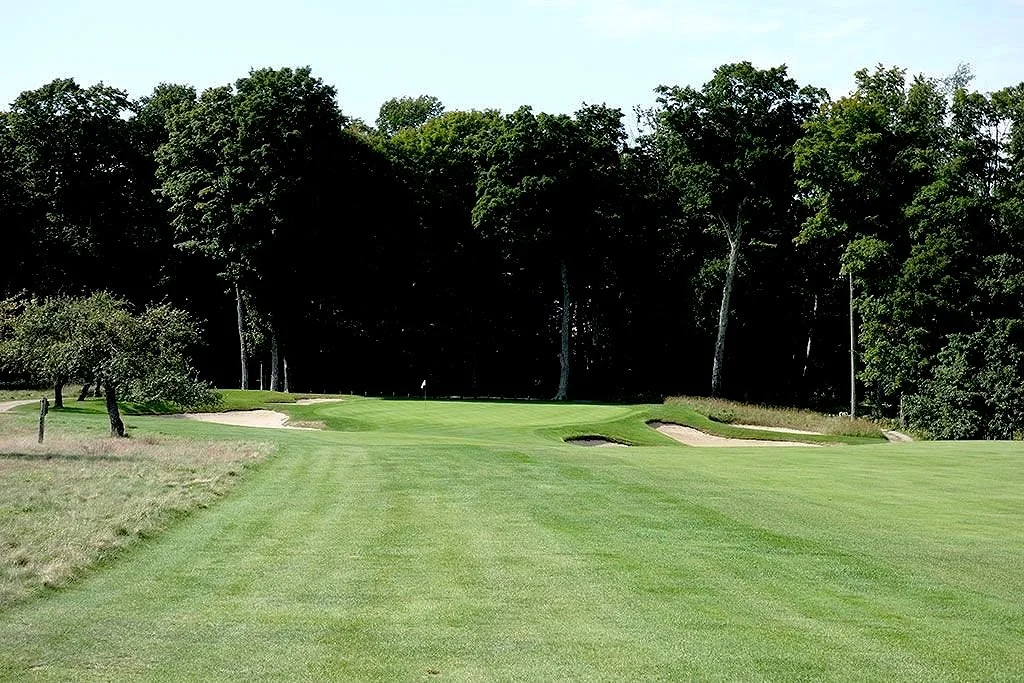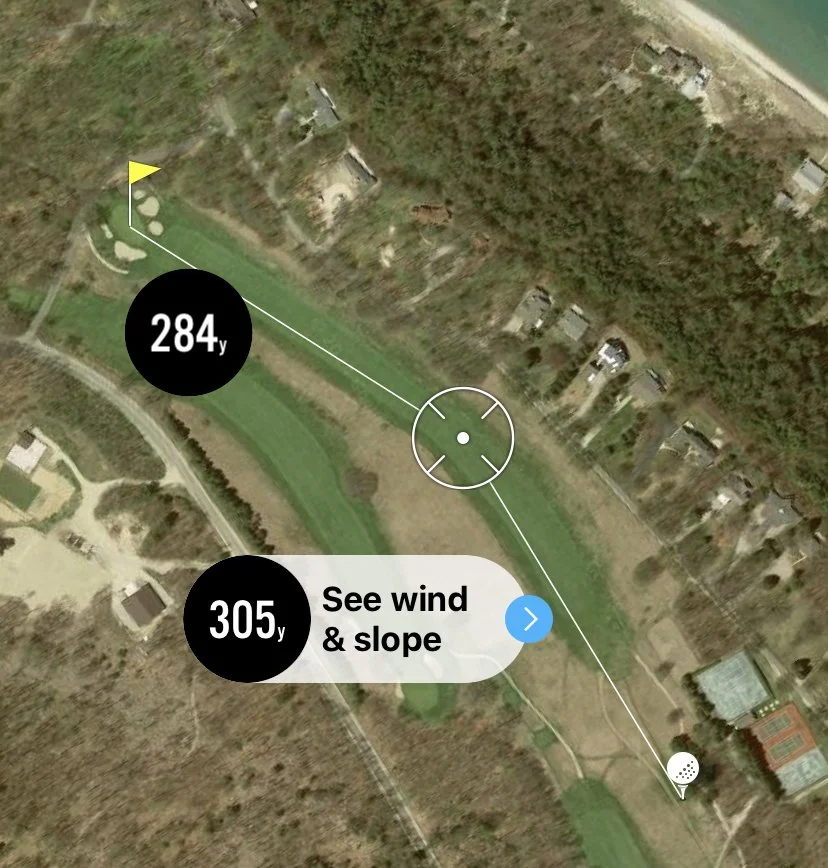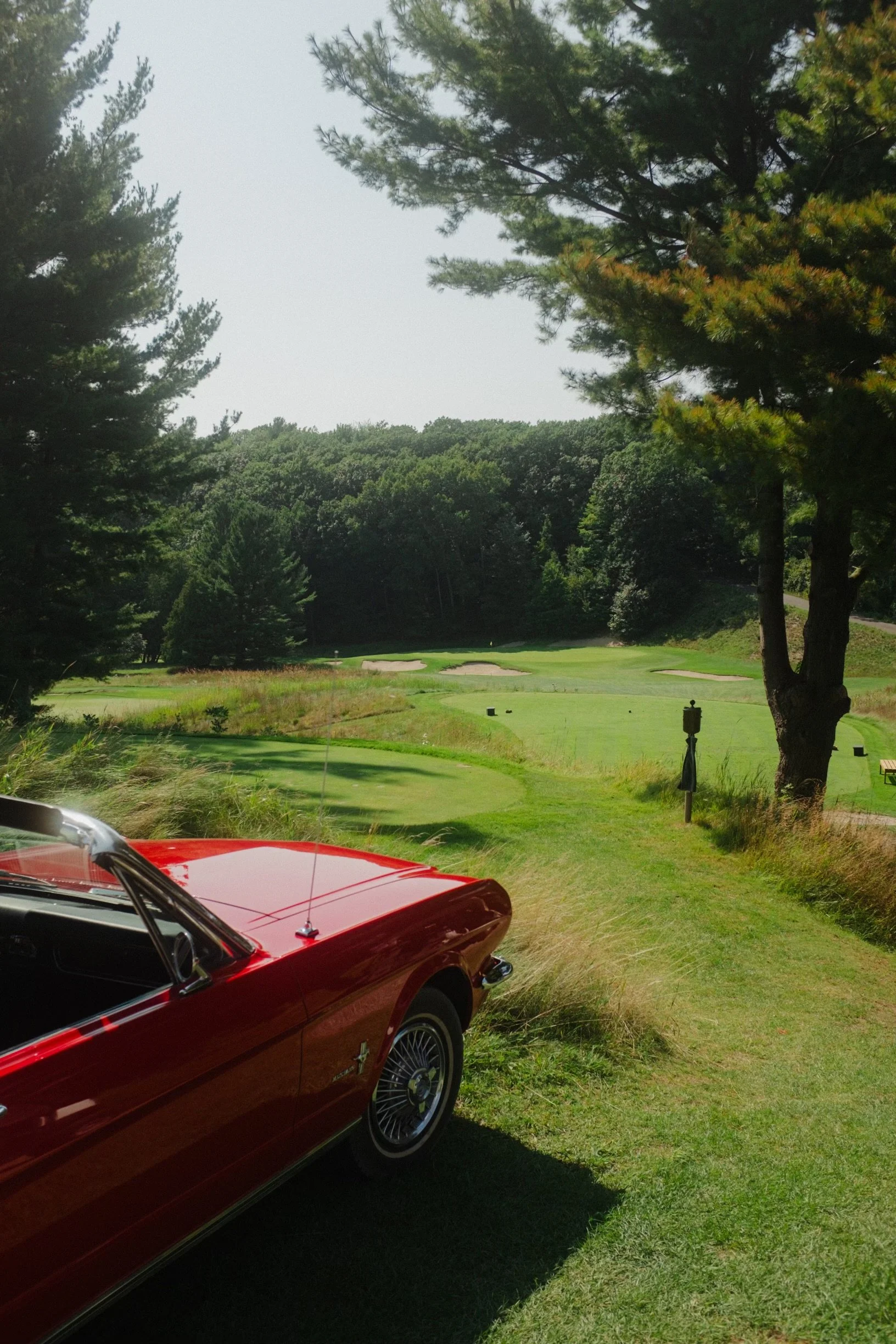Tie Course Reviews: Crystal Downs - Henry Shimp
There are simply no golf shots to be hit right now at Crystal Downs in the depths of the Michigan winter, so in lieu of playing it, let’s talk about what it is like to play it, and my experience doing so last summer.
Crystal Downs is on the short list of “white whale” sort of Alister Mackenzie gems in the United States that many people have not had the chance to play due to both geographic and access driven exclusivity. Crystal Downs is about an hour from Traverse City, Michigan and sits right above Lake Michigan way up on the northern tip of the lower peninsula. The view from the clubhouse out onto the lake is spectacular. Potentially better than the cliffs of Bandon Dunessort of spectacular. As soon as you arrive to play at Crystal Downs, you immediately get the feeling that you are one of the luckier individuals to be swinging a golf club on that day. As I mentioned before, the place is uber exclusive and you know that not many people are getting a more unique opportunity than you are that day on any golf course anywhere.
Now, before jumping into the holes and my review, here are the 3 core takeaways I have on CD:
1. Modern green speeds have somewhat belittled the genius of Mackenzie’s wild designs.
2. The good stuff at Crystal Downs is truly special and some of the more unique golf I have experienced.
3. I left Crystal Downs less impressed than I had expected going in, but there is more to the story than the golf course being simply overrated. Read on to find out more.
Picture by Trey Wren of Sticks Golf
POINT 1:
So, starting out with the experience of the greens at Crystal.
This is something I have seen consistently at Mackenzie courses and have a rather strong take on the matter. As an architect who is revered as much as any, and for good reason, I believe there is a hesitance to mess with anything Mackenzie has done. Often, I believe people aren’t even willing to talk about where great architects’ courses could be better, and maybe I am being excessively bold here, but this feels to me like the classic “don’t allow good to be the gatekeeper of great.” In this case, more realistically, it should be “don’t allow great to be the gatekeeper of even more great.”
There are two important forces at play when we play golf that we can’t really do a lot about, physically speaking. Those are gravity and friction.
For those of you who haven’t taken physics in some time, allow me to remind you that while playing golf, the ball is acted upon by each of these forces and when putting the ball if the amount of friction isn’t sufficient to counteract the effect of gravity working on the ball due to severe slopes on greens, you have a situation where at green speeds that are too high for the amount of slope that is present on greens, the ball doesn’t stay on greens. I have seen this happen at multiple Mackenzie courses because when his courses were designed greens probably ran closer to 7-8 on the stimp meter versus the now standard 11-12. In simple terms what I’m saying is that many of Mackenzie’s best greens just don’t work anymore at modern green speeds and we have too much respect for his work to do anything about it.
Personally, I believe the worst thing we can do if we have so much respect for him (as we should) is do nothing about it. It pains me to hear “this green is stupid/unfair.” It may be outdated or out of line with modern conditioning, but it is far from stupid or unfair. To me, the ultimate form of respect for Mackenzie’s work should be to do everything possible to allow it to be as applicable to the modern game as possible so we can still experience the genius of it. I don’t think green speeds are the thing that we are willing to compromise on, so perhaps making slight edits to the greens to make the areas that don’t quite work for today’s game work properly. Let’s look at 3 case studies below:
Augusta National:
For obvious reasons, Augusta can’t have balls rolling off greens and therefore they have tackled Mackenzie greens in exactly the way I believe they should be tackled. Don’t mess with the massive slopes on greens and take away their bones, rather, make more clearly delineated parts of the greens that are flat so the ball has places to come to rest. Think about the 9th and 18th greens. They still have massive amounts of slope, but there are pockets in the front and back of the greens that are flat enough to allow shots to stay in the right pockets with the greens running 13+
Photo By: Walker Simas
Cypress Point Club:
Cypress has both forces working on it. Holes like 8 and 5 have had minor work done to them so that there are spots for the ball to sit still where it should even at high green speeds. Holes like 1, 4, 9, and 18 have not, and I have seen days where those important forces of gravity and friction we discussed get the better of greens running too fast and the ball truly won’t stay on the green. Where we get into trouble is when you have massive slopes that never flatten at any point. Long, gradual grades in excess of 2% or so are the death wish when greens get too fast.
Video Credit: @sundevilmgolf
Pasatiempo:
Similar to Cypress, Pasa had a number of holes where there was too much >2% gradient green that never flattened. Fortunately, the course is in the final stages of a renovation to work on exactly that. For my money, this will easily catapult Pasa into the top 25 of the country and it will still probably be underrated. Like I said before, to me this is the ultimate form of respect for Mackenzie. Allow his stuff to still play great for modern conditions rather than play as antiquated.
Photo By: Guest of The Tie Podcast, Patrick Koenig
POINT 2:
Now that I have been very upfront about where I think CD could be better, let me explain the things I loved about the course.
I have already made mention of the setting. It’s surreal. Crystal Downs is one of those courses where the setting just makes sense. You feel like you are in a remote part of Michigan without a shade of doubt, and that sense of place to me is one of the key differentiating factors when we start talking about the courses that people truly go mad for. Taking the architecture and conditioning away, why do you think people enjoy golf in Scotland so much? It’s that tradition and clarity that you feel when a course has a supreme sense of place that is hard to describe but just makes a day of golf feel right. Crystal Downs has this.
The second thing that is important to discuss is the fact that all the things I mentioned in my first point about the greens being a lot for the speeds of them comes from a place of there being a number of insanely cool greens and holes. The first stretch that comes to mind for me is the middle of the front nine. 5, 6, 7, and 8 is a sickeningly good stretch of golf. 8 green isn’t quite as exciting as the others, but the one before it is truly one of the coolest greens I have ever seen.
Subscribe to the Sticks YouTube Channel (more coming soon) and The Tie YouTube Channel (this newsletter will be read aloud on our page, posting Friday)
The 5th
Picture by Trey Wren of Sticks Golf
The 5th is one of the more interesting holes tee to green I have played. A large tree to the right side of the hole, the 3 sisters bunkers that can be seen in the middle of the fairway, and the massive ridge that can perhaps obscure your view into the green all make you think long and hard about the correct play off the tee. Endless options and decisions to be made at the 5th, which is all you can ask for. My least favorite thing in golf is when the decision on what to do has clearly been made for you. Dr. Mackenzie didn’t even leave a hint at Crystal Downs’ 5th.
Satellite image of the 5th credit to 18 Birdies
The 6th
Picture by Trey Wren of Sticks Golf
The 6th is another tantalizing tee ball where the green and hole shape are in clear sight, but the exact play is somewhat less clear. Cheat the interior of the dogleg? Mess with the tree? Play safe and up the left? All are options, and depending on the player and conditions, the decision will vary. The green is the course’s largest and is a sort of double punchbowl. While it presents beautifully, this one suffersperhaps as much as any on the course from having too much gradual slope for the speed the greens run these days. I recall all members of my group playing the hole nicely yet I was the only one to hole out as the ball just wouldn’t stop near the hole from most angles of approach. Sharpening of the key slopes and flattening of the gradual ones would do wonders for this green.
Satellite image of the 6th credit to 18 Birdies
The 7th
Picture by Trey Wren of Sticks Golf
The 7th’s boomerang shaped green has a massive slope at its mid-point that allows you to play over 40 feet of break perhaps and use the contour to putt around the bunker that it wraps around, even if there is sand between you and the hole. Just brilliant. I struggle to say exactly if this is a top 10 green I have ever played, but it is no doubt a top 10 most unique green I have ever played.
Satellite image of the 7th credit to 18 Birdies
Photo By: Guest of The Tie Podcast, Patrick Koenig
The 8th just flat out works. It will generally be a 3 shot par 5 given the amount of contour in the fairway and the massive slope leading up to the small green. Even if the green is within range, it is hard to get a lie that allows you to take a cut at a 3 wood or long iron. Especially with the small size of the green. I’ve never loved 3 shot par 5’s but if you are going to have one, a smaller green is the way to go in my opinion because it forces sound decision making on the second shot and this is exactly what Mackenzie did with Crystal Downs’ 8th.
Satellite image of the 8th credit to 18 Birdies
The second stretch of holes at Crystal that I found to be just all world is the 14th-16th. While the beginning of the back nine left me longing for more, the middle of it was just top class golf. I loved every shot on this 3 hole stretch and will try to articulate below the reason for that.
The 14th
Photo By: Guest of The Tie Podcast, Patrick Koenig
The 14th hole gave me the feeling that I was at Pine Valley. Maybe somewhere in the Heathlands of the UK or the Netherlands. A feeling of seclusion and tranquility greet you at the short par 3 14th which houses the course’s smallest putting surface. The infinity view of the green over the heather that covers the entire landscape you hit over creates an optical elusion on this hole that is more than sufficient to make the shot feel like it needs to be much more exacting than it actually does. I absolutely love subtle forms of challenging a golfer, and this is a great example of that.
The 15th. A near drivable par 4 with a green that is perfectly matched to a short par 4 with a rumpled fairway. Small but not tiny, with plenty of undulation that makes the second shot interesting. This hole makes you be very honest with yourself about your wedge game. Are you good enough to hit it within 50 yards of the green and still be able to control a mini wedge shot to a pin that is likely sitting on some sort of a perch? Or are you better off laying back to a full wedge distance?
Satellite image of the 15th credit to 18 Birdies
The 16th - Off the Tee
Photo By: Golf Course Gurus
16 is such an attractive par 5 in every way. Once again, the native grass that frames the hole adds so much to the aesthetic just like the two holes before it. The fairway bends left to a ridgeline where you know the view of the green will be revealed once you hit your second shot over it, and the green sits up against a tree line and is well protected by bunkers that force high level execution if you decide to go for it in two.
The 16th - Approach
Photo By: Golf Course Gurus
This is a simple hole, but it is classy. The 3-4-5 stretch of holes 14-16 make for one of my favorite 3 hole stretches anywhere as the feelings of remote Michigan are perhaps best felt on this stretch of the golf course.
Satellite image of the 16th credit to 18 Birdies
POINT 3:
Finally, let’s cover the core reasons I did not leave Crystal Downs quite as jacked up about it as I expected to.
First and foremost, my expectations for CD were sky high. A perennial top 25 course in the US by almost any rankings system. A Mackenzie gem whose competitive set was essentially Pasatiempo, Cypress, Palmetto, and Augusta in terms of the Mackenzie’s I knew going in. And finally, a course that people speak of in our often all too excessive golf talk of being like a visit to Mecca. I really thought it was going to be one of those days that just hits you completely differently and makes you think you won’t have another experience on a golf course that good for a very long time. But unfortunately, that just wasn’t my reaction.
I do believe so much of my feelings of disappointment come from a place of “what if” which is to say I struggle to look at a course like Crystal or any for that reason and not think about what it could be if things were really dialed in versus where it is currently at. As discussed ad nauseum, the greens just need to be reconsidered in some spots. Modern green speeds don’t allow the course to be what it should be and that’s a shame. A hole I didn’t make any mention of before is the 11th. This is a cool hole at face value, but the day I played, at the speed the greens were running, anything that didn’t sit on the very back shelf (which is maybe 6-8 yards deep) was not only going to run off the front tier of the green, but possibly 60+ yards down the hill in the front of the green as well. Now before you assume I had a bad experience with the hole, I made a gritty 3 with an up and down to the back pin we had, but unfortunately both of my playing partners got the full treatment of their ball rolling all the way off the green multiple times and never finished the hole. Just a bit much.
The last thing I’ll call out is something I talk about all the time and before I get into I want to put my hand up and say maybe I just caught Crystal Downs on the wrong day. But, maybe the most important thing for me with golf courses is the marriage between conditioning and architecture. I’ve talked about the green designs and speeds. What I haven’t mentioned is the softness of the fairways and how much this takes away from the enjoyment of them given how well bunkered many of the holes are and how much topography the land has. What makes links golf so good? It’s the rumpled ground and the fact that the ball scurries along it. Crystal Downs has tons of interesting land movement throughout its fairways but unfortunately the ground just presents too softly for this land to really play as fun as it should. Again, maybe I just caught the course on a softer day, but the soil and turf appeared to me to be the type that would be prone to being soft more often than not.
Let me be clear. I thoroughly enjoyed Crystal Downs and think that its bright spots are blindingly bright. The sense of place, best greens, and cooler holes are all wonderful parts of the experience of getting to play here. I just think there are some things that could be better and left me feeling like CD was not one of Alister Mackenzie’s top few courses like many would rate it as.
Picture by Trey Wren of Sticks Golf
As always, I am more than open to being told I am off the mark and welcome any and all feedback. Get in the game through all our social media channels at thetiepodcast.com
